Chrysanthemums, often referred to as “mums,” are renowned for their vibrant colors and are beloved in the world of horticulture for their beauty and versatility. As a diligent gardener, knowing when and how to cut back chrysanthemums is vital for promoting healthy growth and ensuring an abundant display of blooms. In this comprehensive guide, we will explore the art of plant coaching and address common chrysanthemum problems while providing practical solutions to cultivate these magnificent flowers.
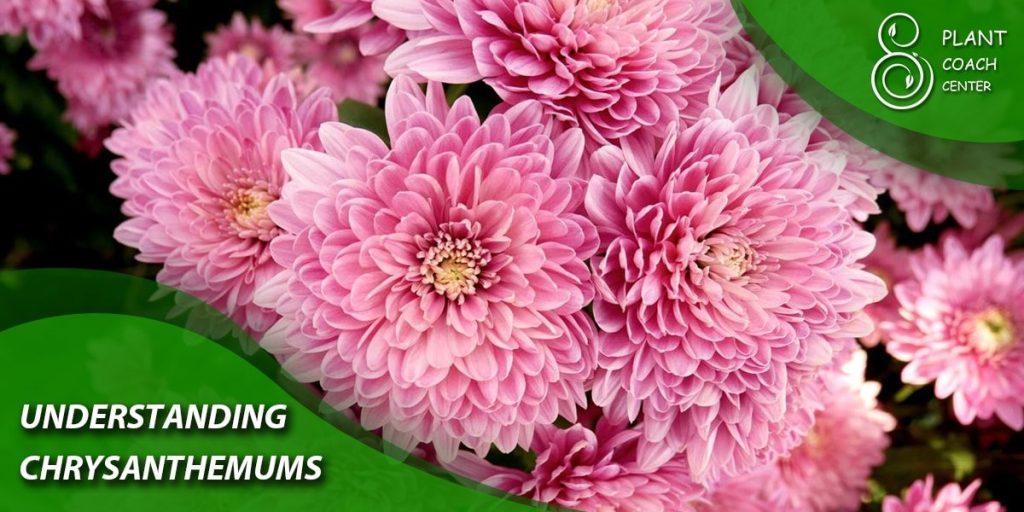
Understanding Chrysanthemums
Chrysanthemums belong to the Asteraceae family and boast a diverse range of cultivars, each with its unique traits. Before delving into pruning techniques, it’s essential to grasp the fundamental aspects of these splendid plants.
Popular Varieties of Chrysanthemums and Their Characteristics
- Pompon Mums: Small, rounded blooms resembling pompoms.
- Spider Mums: Elongated petals with a central disc, resembling spiders.
- Cushion Mums: Compact plants with numerous small blooms.
- Decorative Mums: Large, showy flowers with varying shapes and colors.
- Anemone Mums: Flat, daisy-like flowers with a raised center.
Growth Habit and Life Cycle of Chrysanthemums
- Perennial Nature: Chrysanthemums return year after year with proper care.
- Vegetative Growth: Vegetative propagation techniques for preserving desired traits.
- Budding and Flowering: Understanding the different stages of flower development.
The Significance of Pruning and Cutting Back Chrysanthemums
Pruning plays a pivotal role in shaping the growth and appearance of chrysanthemums, and understanding its importance can significantly impact their overall health and aesthetics.
Pruning Basics: Why and When to Prune Chrysanthemums
- Encouraging Bushier Growth: Removal of apical buds to promote lateral branching.
- Eliminating Weak Growth: Removing damaged or diseased parts to redirect energy.
- Enhancing Flowering: Timing pruning to encourage multiple blooming cycles.
Benefits of Pruning for Chrysanthemums’ Health and Aesthetics
- Improved Air Circulation: Reducing the risk of fungal infections and diseases.
- Enhanced Sunlight Exposure: Ensuring ample light reaches all parts of the plant.
- Optimizing Nutrient Distribution: Redirecting nutrients to essential areas.
Understanding the Impact of Cutting Back on Chrysanthemum Growth and Flowering
- Balancing Growth and Flower Production: Striking a balance to maintain healthy plants.
- Preventing Leggy Growth: Reducing the risk of weak stems and elongated growth.
Determining the Optimal Time to Cut Back Chrysanthemums
Pruning at the right time is crucial for maximizing the benefits and supporting chrysanthemums’ growth throughout the year.
Factors Influencing the Timing of Chrysanthemum Pruning
- Seasonal Considerations: Best practices for pruning in spring, summer, and fall.
- Environmental Factors: Impact of temperature, light, and moisture on pruning decisions.
- Growth Stage and Flowering Patterns: Identifying ideal moments for pruning.
Assessing Plant Health and Vigor as a Pruning Indicator
- Vital Signs of Plant Health: Identifying signs of vigor and distress in chrysanthemums.
- Recognizing Signs of Stress: Detecting environmental and nutrient-related issues.
- Determining Pruning Intensity: Deciding how much to cut back based on plant condition.
Recognizing Visual Cues and Timing Based on Chrysanthemum Varieties
- Understanding Growth Habits: Identifying different growth patterns in various cultivars.
- Pruning Strategies for Different Varieties: Tailoring techniques to suit specific chrysanthemum types.
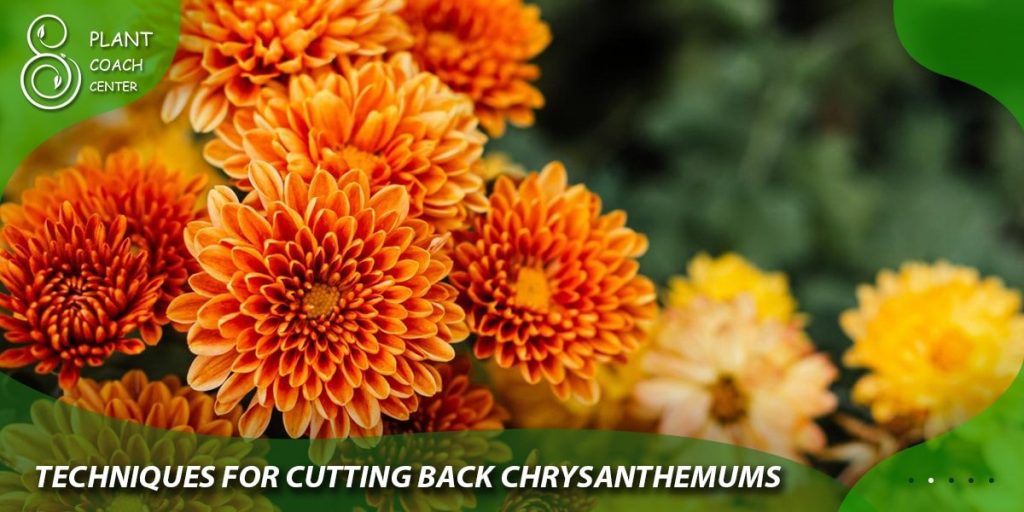
Techniques for Cutting Back Chrysanthemums
Pruning chrysanthemums requires precision and care to ensure the best results. Here, we will explore the essential tools and step-by-step guidelines for effective pruning.
Essential Tools for Pruning Chrysanthemums
- Pruning Shears: For precise cuts on small branches and stems.
- Loppers: Ideal for thicker branches that pruning shears cannot handle.
- Gloves: To protect hands from thorns and potential irritants.
- Disinfectant: Keeping tools clean to prevent the spread of diseases.
Step-by-Step Guide to Pruning Chrysanthemums
- Preparing Chrysanthemums for Pruning
- Inspecting the plant’s overall health before starting the pruning process.
- Ensuring tools are clean and disinfected to avoid the transmission of pathogens.
- Proper Cutting Techniques: Pinching, Deadheading, and Shearing
- Pinching: Regular pinching to encourage lateral branching and more flowers.
- Deadheading: Removing spent flowers to promote continuous blooming.
- Shearing: Cutting back the entire plant for a uniform and neat appearance.
- Managing Height and Encouraging Bushier Growth
- Techniques to control height and prevent leggy growth.
- Encouraging lateral shoots for a fuller and denser chrysanthemum plant.
- Addressing Overgrown Chrysanthemums: Renovation Pruning
- Renovation pruning for rejuvenating older or neglected chrysanthemum plants.
- Steps to reduce the size and reshape overgrown specimens.
Post-Pruning Care: Nutrient Requirements and Watering Considerations
- Fertilizing After Pruning: Providing essential nutrients to support new growth.
- Watering: Adjusting watering frequency and techniques after pruning.
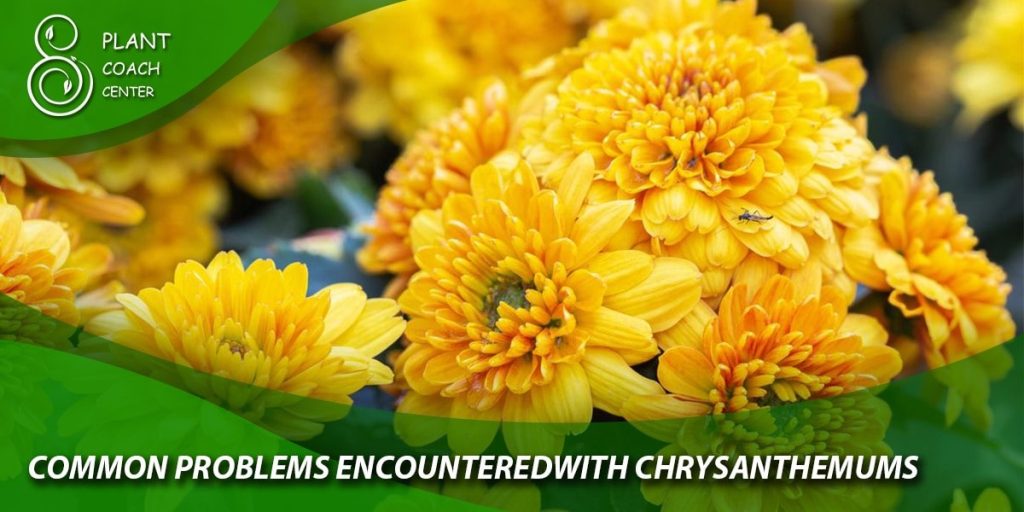
Common Problems Encountered with Chrysanthemums
Even with diligent care, chrysanthemums can face various challenges, including pests, diseases, and environmental stressors.
Pest Infestations and Diseases: Identification and Control Measures
- Common Insect Pests Affecting Chrysanthemums
- Aphids, mites, thrips, and caterpillars: Recognizing and managing infestations.
- Natural and organic methods to control pests without harming beneficial insects.
- Fungal and Bacterial Diseases in Chrysanthemums
- Powdery mildew, botrytis, and leaf spot: Identifying symptoms and preventive measures.
- Cultural practices and chemical treatments to combat diseases.
Nutritional Deficiencies and Imbalances: Diagnosis and Solutions
- Identifying common nutrient deficiencies in chrysanthemums through leaf analysis.
- Proper fertilization strategies to address specific nutrient imbalances.
Environmental Stressors: Managing Sunburn, Wind Damage, and Excessive Heat
- Protective measures to shield chrysanthemums from intense sunlight.
- Reducing the impact of wind and preventing dehydration in hot climates.
Troubleshooting Chrysanthemum Growth and Flowering Issues
Chrysanthemums are captivating plants, but like any living organism, they encounter growth and flowering challenges. However, with attentive observation and timely intervention, many of these issues can be resolved, allowing you to enjoy flourishing and blooming chrysanthemums year after year.
Understanding Factors Affecting Chrysanthemum Flowering
- Photoperiod Sensitivity: How Day Length Affects Flowering in Chrysanthemums
Chrysanthemums are highly responsive to the duration of daylight, known as photoperiod sensitivity. Different cultivars have varying responses to the length of day and night, which significantly influences their flowering patterns. Understanding this photoperiodic response is crucial in optimizing the blooming season for specific chrysanthemum varieties.
- Short-Day Chrysanthemums
These chrysanthemums require long nights (14 hours or more) to initiate flowering. They typically bloom in late summer or fall when the nights naturally become longer.
- Long-Day Chrysanthemums
These varieties initiate flowering when the nights are shorter (less than 12 hours). They usually bloom in the spring and early summer when days are lengthening.
Vernalization Requirements: The Role of Cold Exposure in Promoting Flowering
Vernalization refers to subjecting certain chrysanthemum cultivars to a prolonged period of cold temperatures. This process stimulates flowering and is particularly essential for many spring-flowering chrysanthemums. By simulating winter conditions, gardeners can control the timing of blooms and extend the flowering season.
- Preparation for Vernalization
Identify which chrysanthemum varieties benefit from vernalization and plan for the necessary exposure to cold temperatures during the winter months.
- Vernalization Techniques
Common methods include planting early enough in the fall to allow natural exposure to cold temperatures or providing artificial cold treatment by refrigerating cuttings or seedlings.
Resolving Challenges Related to Poor Flowering or Lack of Blooms
Correcting Day Length: Adjusting Light Exposure to Induce Flowering
To ensure a bountiful display of chrysanthemum blooms, it’s essential to manipulate day length according to the specific photoperiod sensitivity of each cultivar.
Extending Day Length for Short-Day Varieties: Covering plants with a lightproof cloth in the early evening to prevent exposure to artificial light and prolong the night duration.
Providing Shade for Long-Day Varieties:Installing shade cloth to reduce daylight hours for long-day chrysanthemums and simulate shorter days.
Vernalization Techniques: Providing Cold Treatment for Certain Cultivars
For chrysanthemums that require vernalization, it’s crucial to apply the correct treatment to ensure they receive the necessary cold exposure.
- Timing the Vernalization
Determine the optimal time to initiate vernalization for each cultivar based on its specific requirements and expected flowering period.
- Cold Storage Methods
If using refrigeration for vernalization, ensure a consistent and controlled temperature during the required duration.
Nutritional Supplements: Enhancing Flowering Through Proper Fertilization
Nutrient deficiencies can negatively impact flowering in chrysanthemums. Providing the right fertilizers at the appropriate stages of growth can significantly improve blooming.
- Balanced Fertilization
Choose fertilizers with a balanced ratio of nitrogen (N), phosphorus (P), and potassium (K), as well as essential micronutrients, to support overall plant health and flowering.
- Flower-Enhancing Fertilizers
Use fertilizers with a higher phosphorus content to encourage robust flower development.
Dealing with Leggy or Weak Stems: Strategies for Sturdier Growth
Leggy or weak stems can compromise the appearance and structural integrity of chrysanthemums. Implementing appropriate techniques to promote sturdier growth is crucial for maintaining healthy and aesthetically pleasing plants.
Supportive Staking: Using Stakes or Trellises to Strengthen Stems
Staking is an effective method to provide additional support to chrysanthemum stems, especially for tall or heavy-flowering varieties. Sturdy stakes or trellises can prevent stems from bending, breaking, or flopping over, ensuring that chrysanthemums remain upright and visually appealing.
Choosing the Right Stakes
Select stakes made of durable materials such as bamboo, metal, or plastic, and ensure they are long enough to support the height of the chrysanthemum plant.
Installing Stakes Properly
Insert the stakes into the soil near the base of the plant, being cautious not to damage the roots. Secure the stems to the stakes using soft ties or flexible plant ties.
Pinching and Pruning Techniques: Encouraging Bushier Growth for Better Support
Strategic pinching and pruning can encourage chrysanthemums to grow bushier and more compact, which ultimately enhances their ability to support heavy flowers.
Pinching Young Plants
Regularly pinch back the tips of young chrysanthemum plants when they reach about 6 inches in height. This encourages the development of lateral shoots, resulting in a denser, more compact plant.
Pruning Spent Flowers
Deadheading, or the removal of spent flowers, prevents the plant from expending energy on seed production. Instead, this energy is redirected toward producing new blooms and stronger stems.
Thinning Overcrowded Growth
If the chrysanthemum becomes overcrowded with stems, selectively prune out some of the weaker or crossing branches to allow more light and air circulation.
Supportive Plant Structure:By fostering a compact and bushy plant structure, the chrysanthemum’s stems are better supported, reducing the risk of bending or breaking.
Maximizing Chrysanthemum Health and Longevity
Cultivating robust and long-lasting chrysanthemums requires consistent care and attention to their specific needs. By providing the right environment and proper nourishment, gardeners can ensure the health and longevity of these splendid flowers.
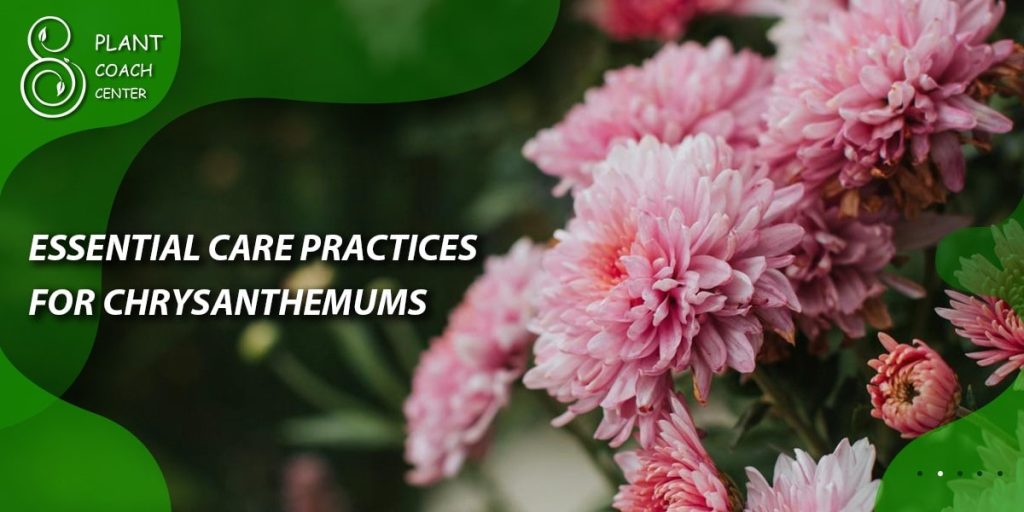
Essential Care Practices for Chrysanthemums
Soil Preparation and Fertilization Techniques
Soil health plays a vital role in supporting the growth and development of chrysanthemums. Proper soil preparation and fertilization ensure that the plants receive the nutrients they need to thrive.
- Understanding Soil Requirements:
Chrysanthemums prefer well-draining, loamy soil with a slightly acidic to neutral pH level. Conduct a soil test to identify any deficiencies or imbalances in the soil’s nutrient content.
- Amending the Soil
Improve soil structure by incorporating organic matter, such as compost or well-rotted manure, to enhance fertility and moisture retention.
- Balanced Fertilization
During the growing season, apply a balanced fertilizer with equal or nearly equal proportions of nitrogen (N), phosphorus (P), and potassium (K) to promote healthy foliage, robust root growth, and ample flower production.
- Micro and Macronutrients
Ensure that the soil contains essential micronutrients like iron, manganese, and magnesium to prevent nutrient deficiencies that can hinder chrysanthemum growth.
Watering Strategies and Irrigation Systems
Proper watering is essential for maintaining chrysanthemums’ health, as they have specific moisture requirements to thrive.
- Watering Frequency
Chrysanthemums generally require regular watering, especially during dry periods. Water the plants deeply, ensuring the soil is evenly moist but not waterlogged.
- Drip Irrigation Benefits
Implementing a drip irrigation system is an efficient way to deliver water directly to the plant’s root zone, reducing water wastage and minimizing the risk of fungal diseases caused by wet foliage.
Controlling Weeds and Maintaining a Clean Growing Environment
A clean and weed-free growing environment is crucial for chrysanthemum health and longevity.
- Weed Management
Regularly remove weeds from the chrysanthemum bed to prevent them from competing with the plants for nutrients and water.
- Pruning Diseased or Damaged Parts
Regularly inspect chrysanthemums for signs of diseases, pests, or damaged foliage. Promptly prune away any affected or dead plant parts to prevent the spread of issues.
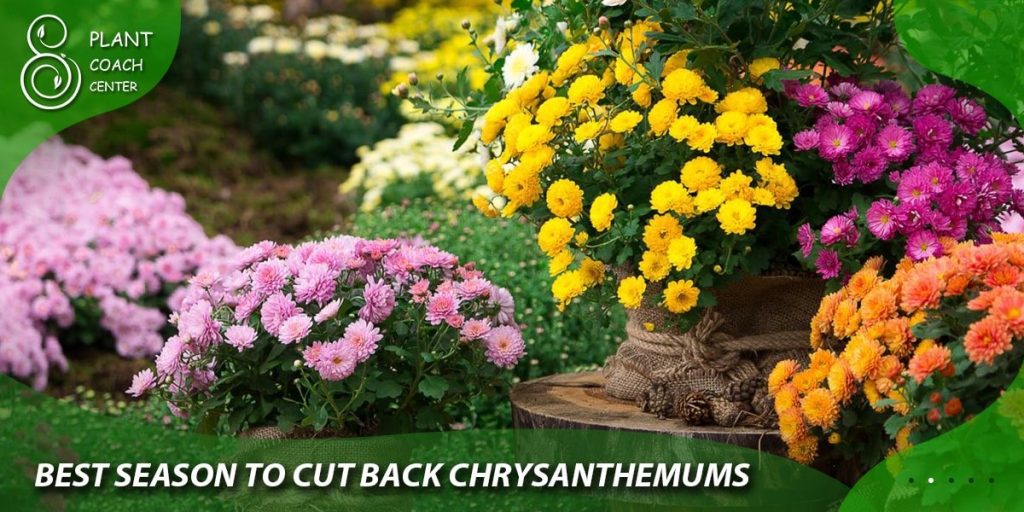
Supporting Chrysanthemum Growth: Staking, Mulching, and Support Structures
Supporting the growth of chrysanthemums ensures that they can reach their full potential, staying healthy, and producing abundant blooms.
Staking and Support Methods: Ensuring Plants Stay Upright During Growth
- Proactive Staking: Staking chrysanthemums early in their growth prevents stems from bending or breaking under the weight of flowers. This practice is especially crucial for tall or large-flowered varieties.
- Choosing Appropriate Support Materials: Selecting sturdy stakes or trellises that can support the anticipated height and weight of the chrysanthemum plants is essential. Materials like bamboo, metal, or plastic are common choices for their durability and versatility.
- Gentle Tying: Using soft ties or flexible plant ties, gently secure the stems to the stakes or trellises. Avoid tying too tightly to allow for natural movement while still providing support.
Mulching Benefits: Using Mulch to Retain Moisture and Control Weeds
- Mulch Types: Apply organic mulches, such as straw, wood chips, or shredded leaves, around the base of chrysanthemums. Mulch acts as an insulating layer, preserving soil moisture and regulating soil temperature.
- Weed Suppression: Mulch helps suppress weed growth around chrysanthemums, reducing competition for resources and minimizing the need for frequent weeding.
- Mulching Guidelines: Apply a layer of mulch approximately 2-3 inches deep around the plants, ensuring the mulch does not come into direct contact with the stems.
Overwintering Chrysanthemums: Protective Measures and Cold Climate Considerations
For chrysanthemums to survive winter and thrive in cold climates, appropriate preparation and protection are vital.
- Preparing for Winter: Steps to Protect Chrysanthemums in Cold Climates
- Timing Matters: Allow chrysanthemums to harden off before the first frost by avoiding late-season fertilization and pruning.
- Cutting Back: After the first frost blackens the foliage, cut back the stems to about 4-6 inches from the ground. This reduces vulnerability to winter damage.
- Mulching for Insulation: Apply a thick layer of mulch around the base of the plants to provide insulation against extreme cold.
- Mulching and Insulation: Keeping Plants Insulated and Safeguarded During Winter
- Choosing the Right Mulch: Opt for mulch materials that offer excellent insulation properties, such as straw, evergreen boughs, or shredded leaves.
- Mulching Depth: Apply a generous layer of mulch around the base of the chrysanthemums, ensuring to cover the crown and root zone to protect them from freezing temperatures.
- Protective Covering: In extremely cold climates, consider adding a protective covering like burlap or frost cloth over the mulched chrysanthemums for added insulation against harsh weather conditions.
Conclusion
In conclusion, mastering the art of pruning and understanding the needs of chrysanthemums are essential elements of successful plant coaching. Armed with knowledge about the optimal timing for cutting back, proper pruning techniques, and solutions to common problems, gardeners can enjoy healthy, vigorous chrysanthemums that bloom abundantly throughout the growing season. Remember that each chrysanthemum variety may have unique requirements, so continued observation and adaptation of care practices are key to ensuring these magnificent flowers thrive in your garden.
When is the best time to prune chrysanthemums?
Prune in spring to encourage healthy growth and fall blooms.
How can I support weak chrysanthemum stems?
Stake or trellis the plants for added support and stability.
Do chrysanthemums need vernalization for flowering?
Some varieties do; vernalize in winter to induce blooms.






